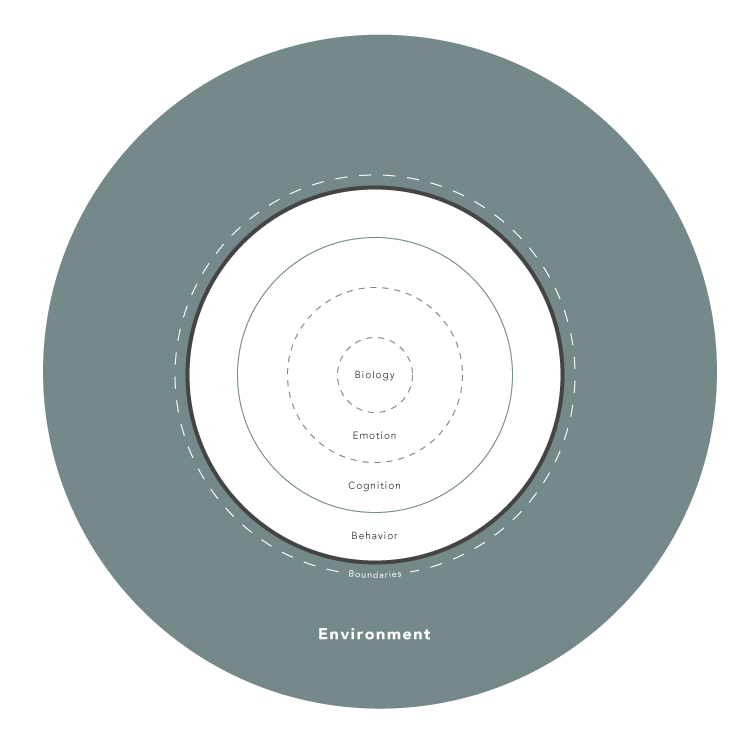Psychotherapy
Research indicates that the therapeutic alliance (i.e., the trust between a therapist and client that allows them to work together effectively) is a major contributor to successful treatment outcomes, so it’s important for clients to find a therapist whose practice is a good “fit” for them. It’s not unusual for therapy styles to be as varied as the individual practitioners themselves, so clients may need to “shop around” in order to find a specific therapist whose treatment style is well-aligned with their goals and presenting concerns.
My treatment approach is based in lifespan developmental psychology and modeled after Cognitive Behavioral Therapy (CBT) and Functional Family Therapy (FFT). I view the therapeutic relationship as a collaborative process that requires time, commitment, and effort from both parties. Although I may have more training with assessment, diagnosis, and psychotherapy, my clients are the experts on themselves, their experiences, and their current circumstances. As my ultimate goal is to help clients define, plan, achieve, and maintain positive change in their lives, their active participation is the most crucial part of this process.

General Therapy Model
This model illustrates the different levels on which we as individuals experience our reality: biology, emotion, cognition, behavior, and boundaries. At any given moment, in any given situation, we are having experiences simultaneously across all of these different levels. Additionally, any problems or issues arising on a single level can impact functioning on the others (e.g., an angry thought leads to an aggressive behavior which disrupts a relationship in our environment), creating the potential for a “downward spiral” of dysfunction.
In therapy, I work with my clients to cultivate a greater understanding of the things they are experiencing on each of these levels and how those different processes are impacting their well-being. We also focus on learning a variety of level-specific skills so that client’s feel better equipped to respond to different stressors in a variety of ways.
Phases of Therapy
My style of therapy is designed to move through 3 phases over the course of treatment, with an optional 4th phase of treatment for clients who wish to remain in therapy after their initial goals have been accomplished. In addition to the individual achievements that my clients want to accomplish in therapy, each phase has specific goals:
Phase I: Investigation
The Investigation phase involves building rapport, applying clients’ specific circumstances to the general therapy model, identifying unique variables and patterns associated with presenting problems, and improving clients’ understanding of their emotional symptoms and experiences, as well as their ability to articulate them in a more precise and accurate way.
Phase 2: Intervention
During Intervention, clients learn specific techniques, skills, and strategies, both cognitive (e.g., thought stopping, bias labeling, reframes, reminders, etc.) and behavioral (e.g., communication training, assertiveness training, behavioral activation, graded task assignment, etc.). Clients then practice these skills as “homework” and therapy sessions focus on making adjustments as necessary to better adapt these practices for clients’ day-to-day living.
Phase 3: Integration
The third phase of therapy, Integration, focuses on preparing clients to transition out of therapy. With the reduction of initial symptoms and concerns through clients’ work in Phase 2, the new goal is to minimize the risk of relapse by increasing protective factors, broadening the scope of current coping skills, and linking clients with additional mental health resources if appropriate. For clients who do not continue on to the optional fourth phase of treatment, this phase should conclude with a formal termination session to mark the conclusion of therapy.
Phase 4: Maintenance
The final phase of therapy, Maintenance, is an optional extension of services that focuses on maintaining the changes accomplished in the previous 3 phases through a combination of reducing or eliminating additional environmental stressors, increasing engagement with supportive activities and relationships, and reinforcing a competence-centered self narrative. The goal of this phase is that clients will ultimately perceive themselves as capable of maintaining their progress and managing their mental health without the need for regular therapy appointments. Phase 4 should conclude with a formal termination session so that clients can reflect on their progress and achievements over the course of therapy.




